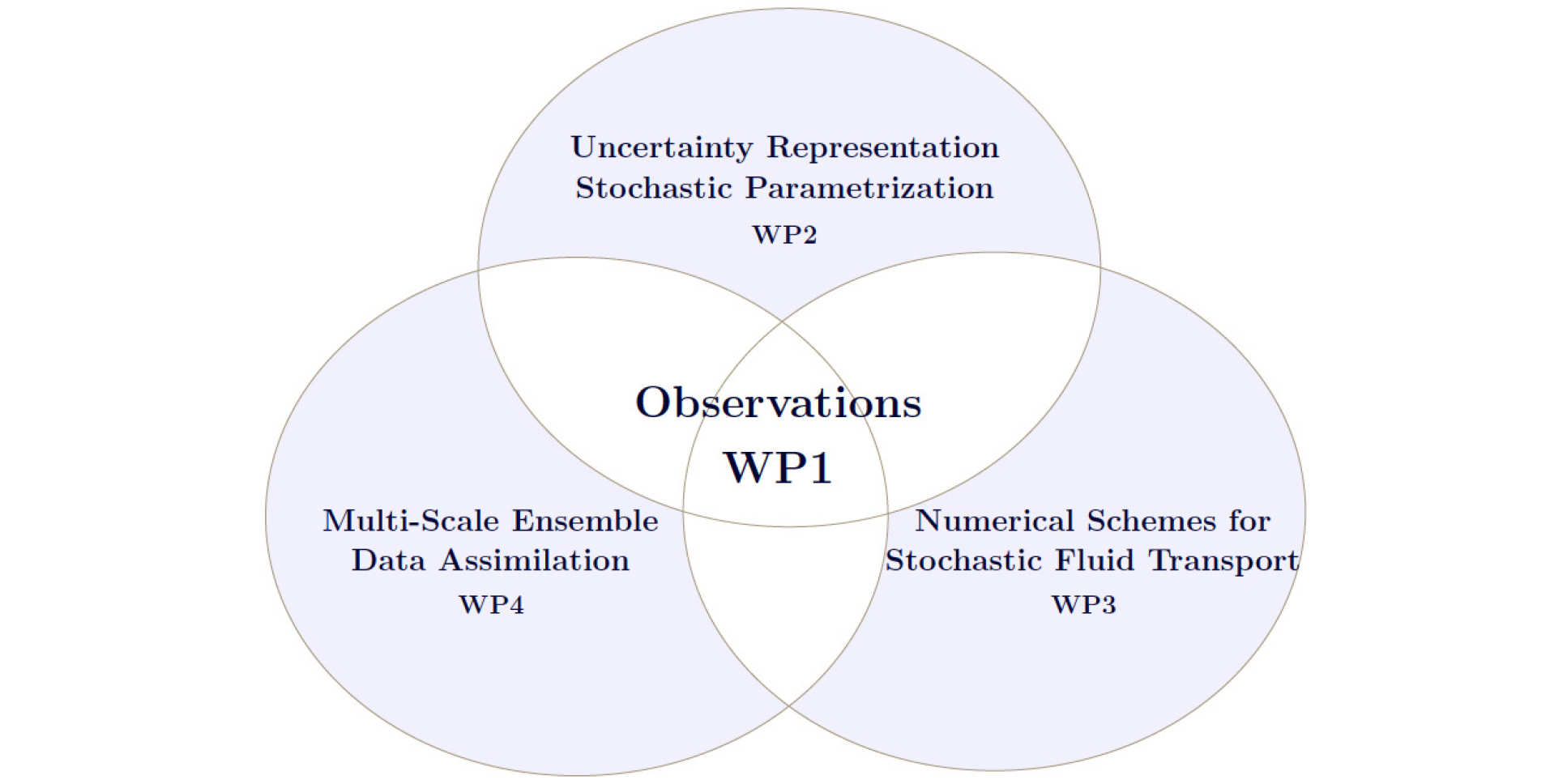Research
Work packages
Each Principle Investigator (PI) will contribute to all the Work Packages (WPs) in a synergetic collaboration; the WPs cannot be completed without applying the expertise of the entire team. The PIs that will lead each WP are identified below. Postdoctoral Research Assistants and PhD students will also work across the project on multiple WPs. View current opportunities to join the team >>
Work packages
Work package 1 (WP1)
Multi-modal ocean data acquisition, analysis and interpretation
Principle investigators
- Bertrand Chapron
- Darryl Holm
Work package 2 (WP2)
Uncertainty representation and stochastic parameterization
Principle investigators
- Darryl Holm
- Dan Crisan
- Etienne Mémin
Work package 3 (WP3)
Numerical schemes for stochastic fluid transport and diffusion
Principle investigators
- Etienne Mémin
- Darryl Holm
Work package 4 (WP4)
Multiscale ensemble Data Assimilation and forecasting methods
Principle investigators
- Dan Crisan
- Etienne Mémin

An iterative sequence of goals
The work packages detailed above are organised to achieve the following iterative sequence of goals:
- Compile and interpret unique high-resolution IFREMER’s satellite, float and drifter datasets and high resolution numerical simulation (WP1)
- Extract the statistical properties from the datasets needed for the mathematical model to separate the velocities of the ocean currents into coarse-scale drift and fine-scale noise (WP1+WP2)
- Apply the statistics of the fine-scale noise in our new class of mathematical models to derive rigorous equations for the coarse-scale drift velocities in a set of realistic exemplars, discussed below (WP2)
- Create an ensemble of computer simulations for each exemplar at coarse resolution with the corresponding new stochastic equations calibrated from the statistical properties of the satellite observations (WP2+WP3)
- Apply newly developed data assimilation methods to this ensemble of simulations to find the most likely solutions among them for the currents and waves, along with their uncertainty and expected variability (WP4)
- Compare the results with further Satellite Observations (WP1)
- Design and make improvements in steps (1) and (2) to better formulate the observed statistics (all WPs)
- Go to step (3), and complete the cycle again until satisfactory convergence has been achieved.


